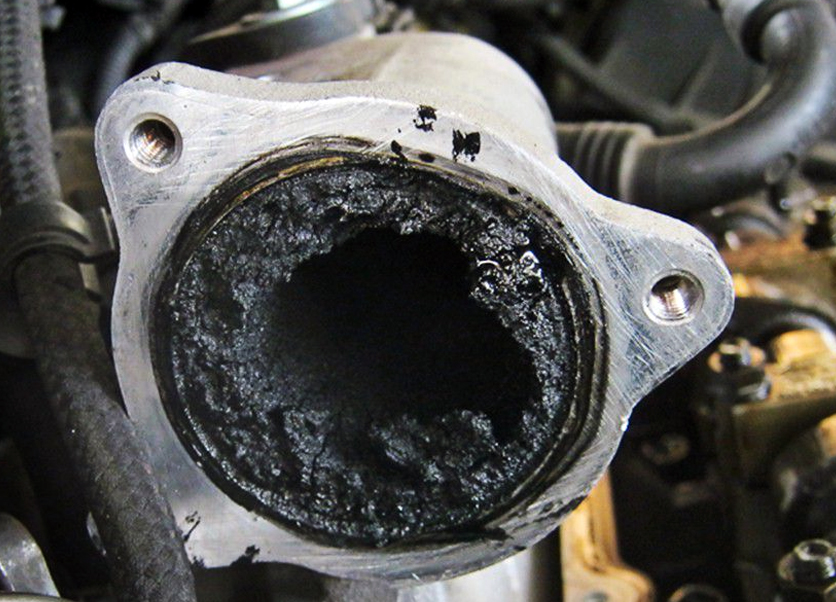
Qu'est-ce que la suppression de l'EGR ?
La suppression de l'EGR est une question fréquemment posée par les amateurs de voitures. En raison des mauvais symptômes liés au dysfonctionnement de la vanne EGR, les automobilistes se demandent souvent s'il est préférable de désactiver (fermer) l'EGR ou de la supprimer complètement.
Avec le EGR off, nous nous assurons que l'EGR est annulé, ceci après la suppression de l'EGR. Nous pouvons également aussi annuler l'EGR en lui ordonnant de se mettre en permanence en position fermée (canceling). N'hésitez pas à vous renseigner auprès de notre support sur la manière dont nous recommandons d'effectuer la suppression de l'EGR.
Au fil du temps, certaines parties du système EGR se couvrent de dépôts, même dans un moteur bien entretenu. Les moteurs diesel sont plus sensibles à ce problème en raison de la suie contenue dans leurs gaz d'échappement. La conduite fréquente sur de courtes distances accélère le processus dans les moteurs diesel. La valve EGR est la première à être affectée par la suie. Ces dépôts empêchent la valve de se fermer correctement et la valve reste bloquée dans certaines positions, ce qui entraîne des erreurs de moteur. Ces dysfonctionnements se manifestent de différentes manières, en fonction de la position dans laquelle la valve se trouve. En outre, les conséquences d'une soupape bloquée dépendent du type de moteur et de la conception de l'EGR.
En général, les dysfonctionnements de l'EGR entraînent un ralenti irrégulier (variation du régime moteur) et le moteur cale souvent et perd de la puissance. Des vibrations peuvent également se produire lors de l'accélération. Dans les moteurs à essence, des erreurs d'allumage (ratés) peuvent se produire et les moteurs diesel commencent à fonctionner de façon "irrégulière". Dans les moteurs diesel, une vanne EGR bloquée réduit les performances du turbocompresseur. Sur certaines voitures, si le système EGR est défectueux, le calculateur met le moteur en mode limp, ce qui limite les performances.
Quelles sont les raisons qui poussent les conducteurs à demander la suppression de l'EGR ?
La durée de vie de la vanne EGR est limitée. Il est impossible de donner une valeur indicative du kilométrage auquel ces véhicules tombent en panne. Tout dépend du style de conduite du conducteur. Les principales raisons pour lesquelles les conducteurs souhaitent supprimer ou annuler l'EGR sont les suivantes :
- Coûts de réparation et d'entretien élevés
- La vanne EGR est difficile à nettoyer
- En cas de dépassement du mode de régénération, des effets négatifs sur le moteur
Quels sont les avantages d'une suppression de l'EGR ?
Nous pouvons rassembler les avantages d'une suppression des EGR sous les rubriques suivantes :
Amélioration du rendement énergétique
Lorsque vous redonnez de la puissance à votre moteur diesel, vous retrouvez également un rendement énergétique global. Grâce à la suppression de l'EGR, vous vous assurez que les gaz d'échappement ne sont pas réutilisés dans le moteur, ce qui permet à tout de fonctionner et d'être plus propre.
Le kit EGR abaisse la température du moteur
Lorsque la soupape ou les refroidisseurs du système EGR sont obstrués par la suie, les gaz d'échappement commencent à circuler plus fréquemment dans le système. L'encrassement provoque une augmentation de la température autour du moteur. En cas de suppression de l'EGR, votre véhicule ne peut pas réutiliser les gaz d'échappement, ce qui entraîne une baisse de la température pendant la conduite.
Améliore la réponse de l'accélérateur
La suppression de l'EGR donne à votre véhicule plus de puissance et améliore la réponse de l'accélérateur sans sacrifier la durée de vie du moteur ou l'économie de carburant.
En plus des avantages ci-dessus
- La désactivation de l'EGR élimine pratiquement la recirculation des gaz brûlés dans le collecteur d'admission, ce qui augmente la puissance du moteur.
- Dans certains cas, la consommation de carburant du véhicule est réduite en raison de l'apport accru d'air frais.
- Pas besoin d'entretien ni de remplacement de pièces coûteuses.
Y a-t-il des inconvénients à supprimer l'EGR ?
Les avantages de la suppression de l'EGR parlent d'eux-mêmes, mais nous pouvons également mentionner certains inconvénients. Les inconvénients courants de la suppression de l'EGR :
- Si vous supprimez l'EGR, il peut y avoir un problème si le véhicule est encore sous garantie.
- Des émissions différentes des émissions prédéterminées spécifiques à votre véhicule peuvent se produire.
- La couleur des gaz d'échappement peut être légèrement plus noire.
Comment appliquer une suppression EGR ?
Si vous souhaitez appliquer une suppression de l'EGR, vous pouvez toujours nous demander conseil au préalable. Nous vous expliquerons ensuite l'application appropriée. Vous pouvez ensuite charger le fichier dans notre portail et télécharger ensuite le fichier modifié.
